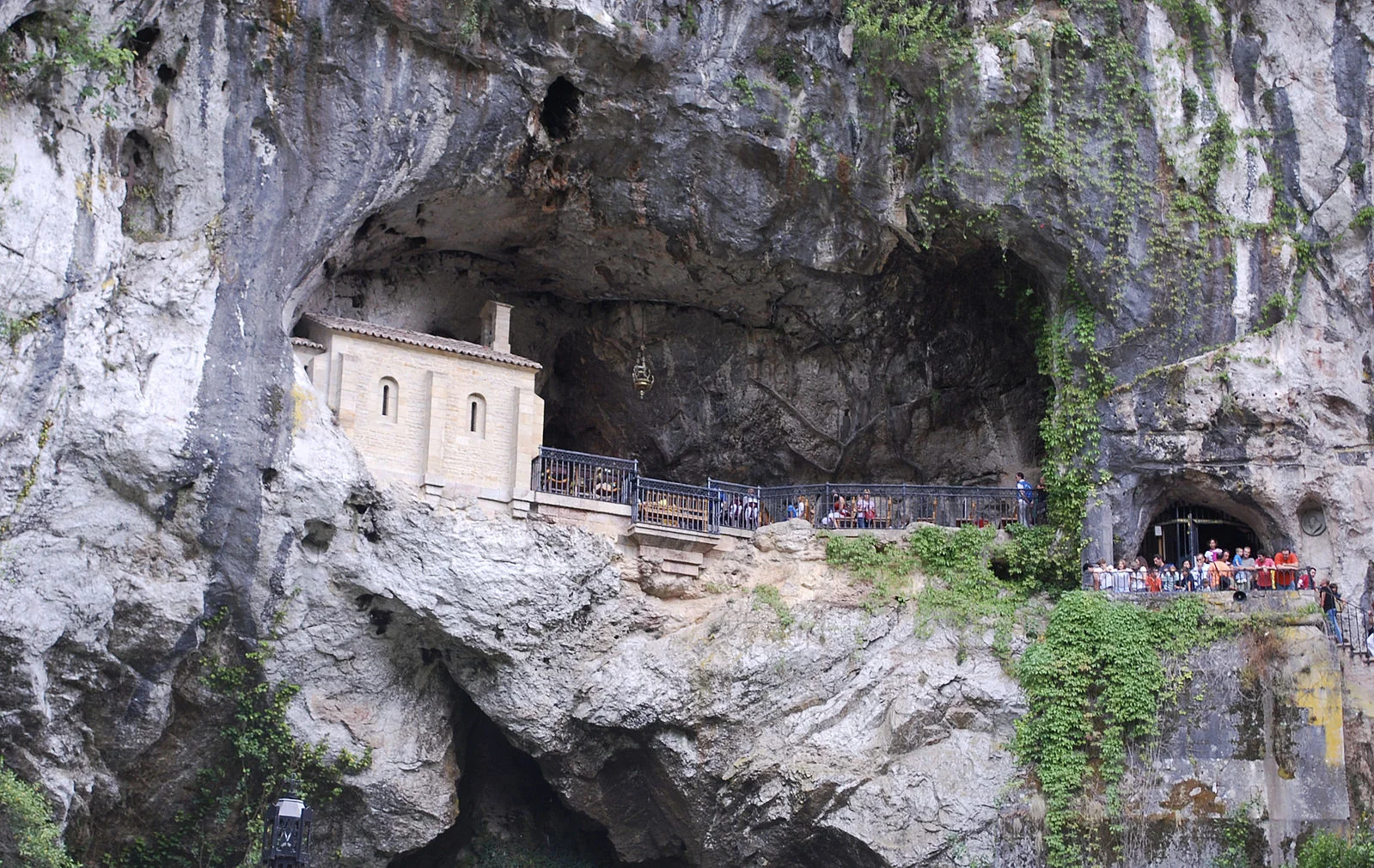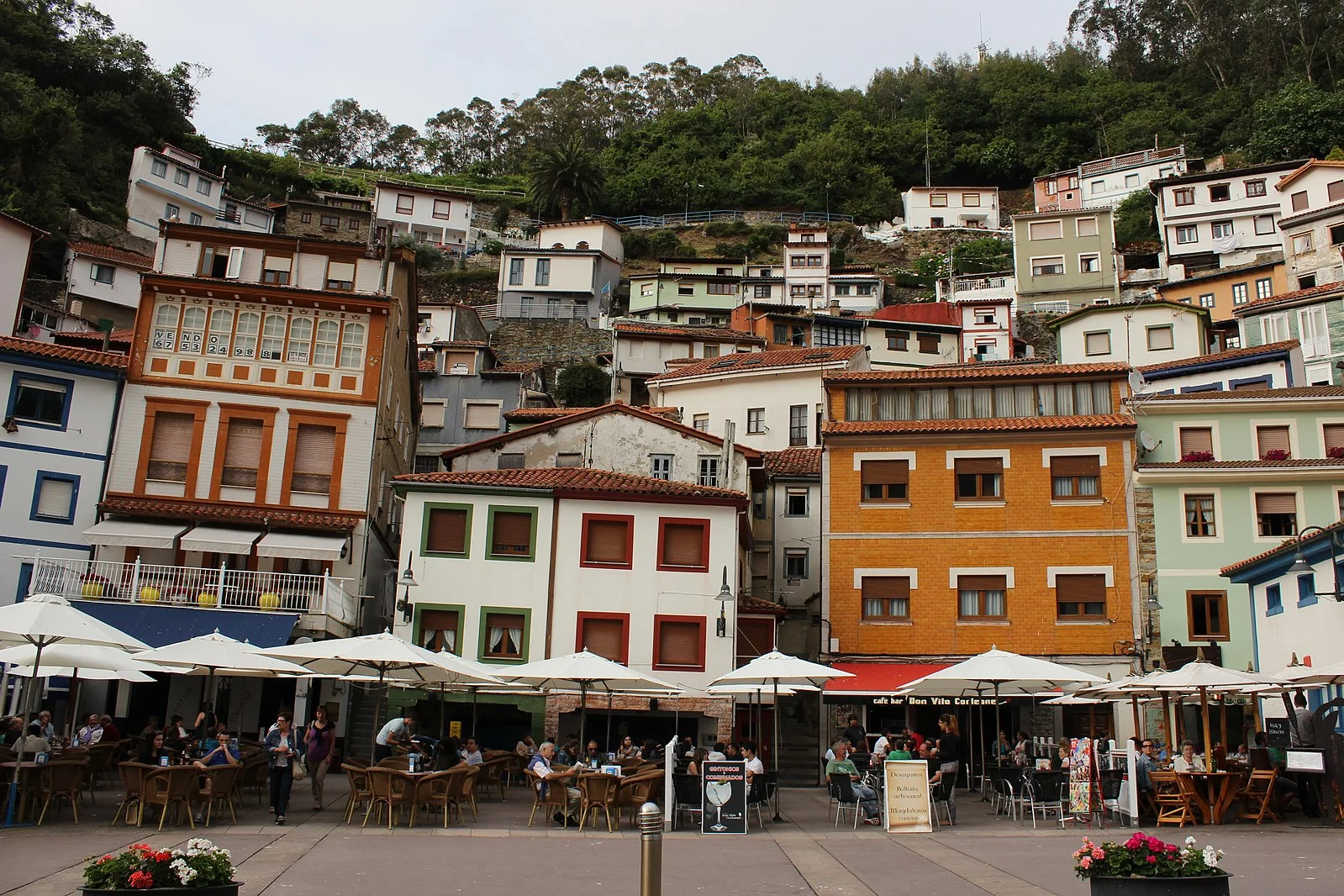DAY 1: False Advertising (Cantabria)
BONUS: palace of la magdalena
Built for the Spanish royal family in the early 1900’s, La Magdalena was first used by King Alfonso XIII in 1913; he came here every summer until 1931, when the Proclamation of the Spanish Republic had to ruin all the fun (and the monarchy). Since 1932, it’s been used as a university and conference center, but it can’t be all business with those seaside views. You can access two beaches - La Magdalena and Bikini Beach, named because the adjacent university hosted the foreign students who introduced bikinis to Spain, giving new meaning to the term “student body.” If you can pry yourself away from the beaches (and bikinis) the palace reception room has several paintings of note and the palace stables are renowned for their architecture though you can’t go inside, as they currently serve as student dorms. Housing university students in stables seems about par for course in terms of how students are generally treated, but anytime you can go to school next to the beach, even if you have to sleep with horses you come out ahead.
Suggested duration: 60 minutes. Visit www.palaciomagdalena.com for opening times and more information.
santillana del mar
Other than the palace and beaches, you may skip Santander for it’s medieval neighbor, commonly referred to as “the town of three lies,” because there’s no saints buried there (santa), it’s not a flatland (llana), and it’s not by the water (mar). Despite the pathological lying there’s much to appreciate even if it’s opposite as advertised - landlocked, hilly, and satan worshipping (just kidding about the satan part, at least as far as we know); it’s actually named after Santa Illana who’s buried near the ocean in nearby Colegiata. The picturesque beauty of the town with its cobblestone streets, mountain views, authentic shops and cafes, serves a valuable moral that you shouldn’t lie and pretend to be something you’re not; just be yourself and people will like you regardless. Unless you’re strange, then you should definitely pretend to be someone else. But this town doesn’t have that issue.
Suggested duration: 2-3 hours. Visit www.santillana-del-mar.com for more information.
cave of altamira
Discovered in 1879, by an eight year old girl, these caves are renowned for their extensive works of prehistoric cave art, depicting animals, human hands and faces in a variety of colors, the earliest of which dates back to the Upper Paleolithic Era about 36,000 years ago. The parietal art was brought to the attention of the archaeological community by Marcelo Sanz de Sautuola, amateur archaeologist and the father of the 8 year old girl (take your daughter to work today turned out much better than expected). Yet the archaeological community, led by the stubborn French, refused to believe that prehistoric people possessed the sort of ability required to master these works and went as far as accusing de Sautuola of hiring someone to paint the works and pass them off as authentic (the eight year old daughter would’ve been an obvious culprit). Except the art was not only accepted as authentic 20 years later, it also illuminated just how extensively skilled these “cave-people” were, going as far as diluting the charcoal to create shadow effects and using the contours of the cave to create 3D effects. They even created imprints of their hands, the equivalent of an artist’s signature, so not only were they skilled, they were just as full of themselves as artists are today. The reason the cave art was so well preserved was due to a wall collapse 13,000 years ago that kept the air pure until modern time. Unfortunately, the cave was opened to the public in 1970’s without appropriate protection, and tourists had to go about breathing their water vapors all over the art, which led to slight dissolving of the paint. Because we can’t have nice things, artists built a replica of the cave near the actual cave, so we can ruin that instead. So no, you can’t visit the actual cave but the replica is nearly as impressive, especially the multi-colored ceiling, depicting a species of now-extinct bison (never forget), a depiction that’s unmistakably ahead of its time.
Suggested duration: 60 minutes. Visit www.santillana-del-mar.com for more information.
el caprichio de gaudi
Even if you’ve had enough of the architecture of Antonio Gaudi in Barcelona and thought that you were finally free of his suddenly excessive-seeming whimsical style, you thought wrong (you can run but you can’t hide). He didn’t build much outside of Barcelona but when he did, he still brought the whimsy, as evident in this 1885 construction, summer home of wealthy merchant Maximo Diaz de Quijano. It’s from Gaudi’s earlier period, more similar to Casa Vicens than Sagrada Familia, with a restrained interior, compared to the exterior, but the colors and patterns are definitely his and there are a couple unique touches not seen in his other works, like the Lego brick-like Persian-style tower and decorative sunflowers dotting the facade. There is also a statue of Gaudi in the garden admiring his own architecture, but it was added after Gaudi’s death, in 1989, lest you think he was just another self-absorbed artist.
Suggested duration: 60 minutes. Visit www.elcaprichodegaudi.com for opening times and more information.
BONUS: cueva el soplao
The most well-known of the over 6,500 known caves in Cantabria, Cueva el Soplao’s formation dates way back to the Cretacious Period, around 240 million years ago, and with its peculiar yet aesthetically-pleasing mineral formations, demonstrates that even nature is capable of being artistic (and without the ego). The cave was discovered by accident by a mining company and quickly exploited for its minerals (so typically human), before the local university stepped in to preserve the cave for study. It’s now often used as a concert venue (so much for preserving) and of course for exploration. Of the 17 miles that comprise the cave system, 6 are open for exploring, including the Gallery of the Ghosts (as if a dark cave wasn’t scary enough), Gallery Gorda with a big, dark underground lake (definitely not swimming in there) and Gallery Genesis, the most colorful (not as enjoyable if you’re color blind).
Suggested duration: 90 minutes. Visit www.elsoplao.es for tickets, opening times and more information.
colombres or llanes
Two quiet, picturesque towns give you two excellent options for further exploration or deep relaxation. Colombres is known for its “indiano” architecture, built by those lucky few who had emigrated to America from 1850-1950, and returned with fortunes (what’s the point of wealthy if you can’t show it off?) The best example is the Quinta Guadalupe (now Indianos Archive Foundation) which can serve as the starting point for an “indianos” tour. If you’re easily made jealous you can skip the historic part of town and head north toward the coast, where you can explore the ruined, yet still perfect looking Iglesia de Santa Maria de Tina as well as Pindal Cave, in case you haven’t reached your cave art quota for the day. It’s less impressive than Altamira, but it’s also not a replica; it’s the real deal. Llanes, on the other hand, is known more for its extensive beaches, both crowded and quiet, starting with Playa del Toro, the most popular, and Playa del Sablon, a tiny but popular beach known more for its promenade with a large-scale work of art, Los Cubos de la Memoria, colorfully painted concrete blocks that also serves to break incoming waves. Less crowded options include the golden Playa Ballota, the picturesque Antilles and the offbeat Beach Poo which is not nearly as shitty as it may sound.
STAY THE NIGHT in: colombres or LLANES
DAY 2: Nature Worship (Asturias)
parque nacional de los picos de europa
With the stunning gorge-spanning hike, twin picturesque glacial lakes, and… a chunk from the cross that Jesus was nailed to… there’s no place in Asturias that will bring you more good vibes, so beautiful that even a casual reminder of violent crucifixion won’t dampen your spirits; if you’re here on pilgrimage, it may uplift you even more. While some sites require a suspension of disbelief, (others simply a suspension in engineering), most of the beauty in Picos National Park you need only see to believe.
the cares trail
When this path was completed in 1921, it was the only way to get from the towns of Poncebo to Cain without climbing up a mountain or going the long way around, which proved useful when a town ran out of supplies (can we borrow some milk?). In the age of convenience, we can better appreciate the view, (without the worries of getting back before the cereal is stale). Don’t let the views of “the divine gorge” distract you too much; there’s not much to protect you from falling to your death and the narrow path can be crowded. It’s the most popular hike for good reasons: a flat, 8-mile walk through Spain’s finest terrain.
Duration: 3 hours. Visit www.turismoasturias.es for more info.
monastery of santo toribio de liebana
Founded before the 6th century, Santo Toribio famously holds a shard of the Holy Cross, on which Jesus Christ was crucified, the largest known piece of the cross in existence (the rest was used for s’mores skewers). Thought to be from the left side of the cross it even has the hole from the nail driven through the hand of Jesus (or a DIY construction job gone horribly wrong). In 1958, scientists concluded that the wood actually originated from the Mediterranean region, about 2,000 years ago, so the only way it would be any more legit, is if Jesus autographed it himself which he couldn’t because of the whole hand situation.
Duration: 1 hour. Visit www.santotoribiodeliebana.es for info.
lakes of covadonga
The twin glacial lakes of Enol and Ercina can be challenging to reach. You have to drive on a narrow, winding road, often filled with fog and animals crossing the road with reckless abandon. From the parking lot, take the bus to the lakes to save time for the gorgeous walk around the actual lakes. The wild cows tend to get territorial so don’t think you’ll get away with instigations. If they attack unjustly, just get your revenge on the drive back.
Duration: 2 hours. Visit www.turismoasturias.es for more info.
sanctuary of covadonga
Like most holy Christian sites, pagans worshipped here first, at this ‘well of worship’ in Roman times. The Christian legend tells of Pelagius, a nobleman who started the Reconquista of Spain from the Moors, chasing a criminal into this cave. The criminal made an appeal to Virgin Mary and the cave’s resident hermit made an appeal to Pelagius on his behalf sparing his life (also aiding and abetting a criminal). Another legend says the army of Pelagius fled from the Moors into the cave and found some honey which gave them energy to defeat the Moors (and then diabetes). Some say the Virgin appeared and she fought them herself; how can you handle 72 virgins if you can’t handle one?
Duration: 1 hour. Visit www.turismoasturias.es for more info.
BONUS: roman bridge in cangas de onis
This bridge isn’t actually Roman, it’s from medieval times but it’s built where the Romans are said to have crossed the Sella River, around which the town was built. Hung from the center arch is the Victory Cross, the original of which is on display at Catedral Oviedo, so basically everything here is a replica, but you can’t replicate the beautiful memories you’ll create here.
Duration: 30 minutes. Visit www.turismoasturias.es for info.
ribadesella or gijon
Another night, another tough choice between two neighboring towns competing for your attention and business. First, there’s Ribadesella, a town with a rich medieval history but an even richer beach scene (other than another helping of parietal art, at Rock Art Center of Tito Bustillo, you’re not really here for the history). Start east of town, halfway toward Llanes at the equally stunning Playa de Barro or Playa de Borrizo. A bit closer to the town is the unique Playa de Gulpiyuri, a beach with no horizon - the water seeps through a crevice in the rocks creating a small pool with an equally small sand patch. It’s offbeat… almost too offbeat, and attracts large crowds seeking Instagram clout at the expense of having an authentic experience. Close to town is Playa de Cuevas del Mar with its impressive rock formations, Playa de Guadamia, more like a kiddie pool, or if you just want a convenient beach fix, there’s Playa de Ribadesella, right in the town itself. If you’re not looking for any beach fix you may have more fun in Gijon, with its authentic cuisine, colorful row-homes and its massive, epic waterfront sculpture Elogio del Horizonte.
Visit www.ribadesella.es or www.turismo.gijon.es for more information.
STAY THE NIGHT IN: ribadesella or gijon
DAY 3: Holy Sights (ASTURIAS)
the skate church
Abandoned after the Spanish Civil War, this 1912 church found a “higher purpose” for local skater Fernandez Rey whose “Church Brigade” set off on a crusade to “radically” repurpose this church for the community skateboarders in Llanera, which sees about 200 days of rainfall per year. With assist from Spanish painter Okuda San Miguel, this skate-church is more “righteous” than ever.
Suggested duration: 30 minutes. Visit www.laiglesiaskate.com for opening times and more information.
Editor’s Note: the skate-church is currently closed for renovations. (March 2019-?)
BONUS: oviedo
The thoroughly medieval capital of Asturias is known for its holy sites (those that have yet to be converted to skate parks). In the center of the town is Catedral de San Salvador, built between the 13th to 18th centuries but predated by a chapel built in the 800’s by Alfonso II, who’s believed to be interred in the church’s Panteon Real (they didn’t have dental records back then) along with six other medieval Asturian rulers. In the church museum are two medieval crosses (gifted by Alfonso II and III) a piece of wood from Jesus’ cross and a cloth that was used to cover dead Jesus’ face (possibly just a used tissue). Not far beyond the city limits is the Church of Santa Maria del Naranco, originally a royal palace, completed in 842, with richly decorated reliefs that were way ahead of their time (“nobody will ever want their home to be richly decorated,” critics of the time probably said). Another half mile up the hill is the smaller but equally ancient-looking San Miguel de Lillo Church. May as well go the distance, to the top of Monte Naranco, to visit Monumento Sagrado Corazon, a towering stone statue of Christ overlooking the town of Oviedo - a view to be crucified for.
Suggested duration: 90 minutes. Visit www.turismoasturias.es for more information.
cudillero
Beauty is in the eye of the beholder, but if you don’t agree that Cudillero is the most beautiful village in Asturias, it would be safe to declare you legally blind. With its multi-colored homes set in rows, on a hill surrounding a bay, if you’re not already living here, you’ve already lost in the game of life. Climb to the top for beautiful bay views or grab a chair at one of the many bayside cafes.
Suggested duration: 90 minutes. Visit www.turismocudillero.com for more information.
cabo vidio
If you like to look at the ocean but don’t like to go inside of it (for fear of sharks and of sand in your privates) this overlook, at 250 feet above sea level, is the spot for you. It’s a popular mating site (birds not humans) but the views inspire romance for all species.
Suggested duration: 30-60 minutes. Visit www.turismocudillero.com for more information.
playa del silencio
The “beach of (relative) silence” (given that you’re not the only one seeking an escape) not only brings the big views but also the beach access, which may inspire you to finally overcome your sea-related phobias (sandy privates is more a threat than sharks).
Suggested duration: 60-90 minutes. Visit www.turismocudillero.com for more information.
BONUS: luarca
If you thought Cudillero was the only picturesque town in Asturias, Luarca has a boat to rent to you (no literally, there are plenty boats to rent). Unlike Cudillero, the homes are almost uniformly white, but the boats that line the bay come in a variety of colors. It’s worth a brief voyage to see the town from a distance, assuming you’re not one of those people that lacks basic coordination and will need to be rescued shortly after departure. If you’re one of those, maybe a walk to the end of the docks is more for you.
Suggested duration: 90 minutes. Visit www.turismoluarca.com for more information.
as catedrais beach
The “beach of the cathedrals” derives it name from the arches that look like cathedral vaults; even the sound of the wind passing through the arches has been compared to that of an organ or choir. Except at this church, you don’t have to sit here against your will for three hours in formal attire, definitely the type of church you can get used to. Don’t wander too far off the main beach, as the way back may be blocked by high tide, and God won’t be able to help you, especially if you haven’t gone to church in a while.
Suggested duration: 30-60 minutes. Visit www.ascatedrais.gal for more information.



















